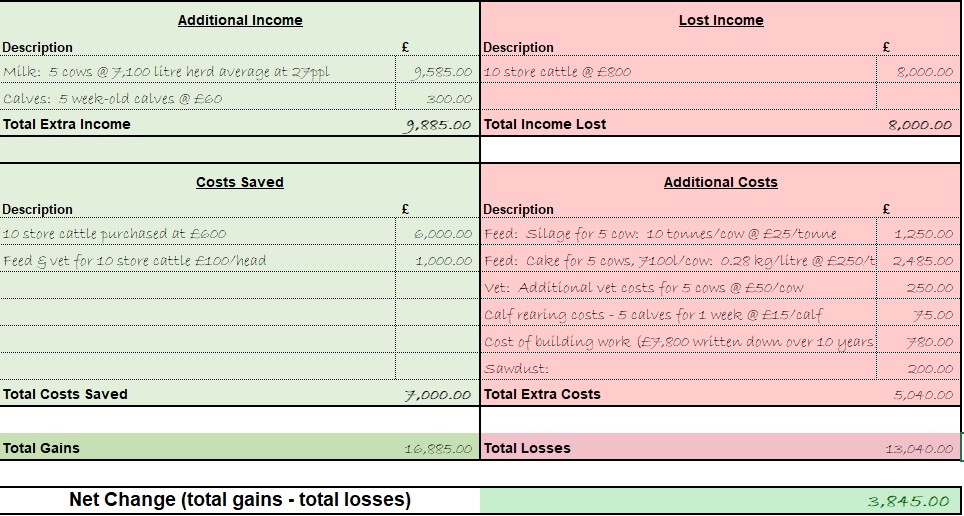Partial Budgeting - The Quick Way to Assess Your Options
The impacts of Brexit on your farm business may not be clear yet but this is a good opportunity to make changes which will increase the efficiency of your business. It is important to understand what the likely impact of any changes will be for the business, but re-calculating the whole farm budget is unnecessarily time consuming. Instead you can use a partial budget to work out what the difference will be.

A partial budget makes you think not only about the likely additional income and costs associated with the change in enterprise, but also the costs saved or income loss associated with any reduction in an existing enterprise.
Working through a partial budget is really useful exercise as it encourages you to think through aspects of the plan that you may not otherwise have considered fully. It’s also a good opportunity to discuss the plan with the wider team to make sure that nothing is missed.
Example:
Jim milks dairy cattle but also buys store cattle for overwintering and sale the following spring. Jim intends to extend his dairy cow cubicle housing into the adjacent youngstock building, reducing the number of store cattle which can be kept. He expects that he will be able to increase the number of cow cubicles by 5, and will need to reduce the number of store cattle kept by 10.
This change will require some capital spend, but will the extra income from the additional cows make it worthwhile?
Firstly Jim needs to consider what the additional income will be. He estimates not only the additional milk produced, but also that there will be additional calf sale income. Then he needs to think about the costs he will save, which in this case are the cost of 10 store cattle which would normally be purchased, together with their feed and vet costs for the winter. These two figures added together are the total potential gains from the change.
Then Jim needs to think about what the lost income will be, in this case the value of 10 heavier store cattle following a winter in his shed. He will also have additional costs associated with the extra dairy cows including feed, forage, vet costs, calf-rearing costs, bedding and sundries – he also wants to write-down the cost of any building work. These two figures added together are the total potential losses from the change.
If the gains from the proposed change area greater than the losses then it makes sense to go ahead.
Jim’s completed partial budget looks like this:

To make a partial budget for your own scenario we have a tool you can download [here] and complete on the computer, or you can print off our pdf worksheet [here].
The Farm Management Handbook can help you with the assumptions.
Sign up to the FAS newsletter
Receive updates on news, events and publications from Scotland’s Farm Advisory Service
